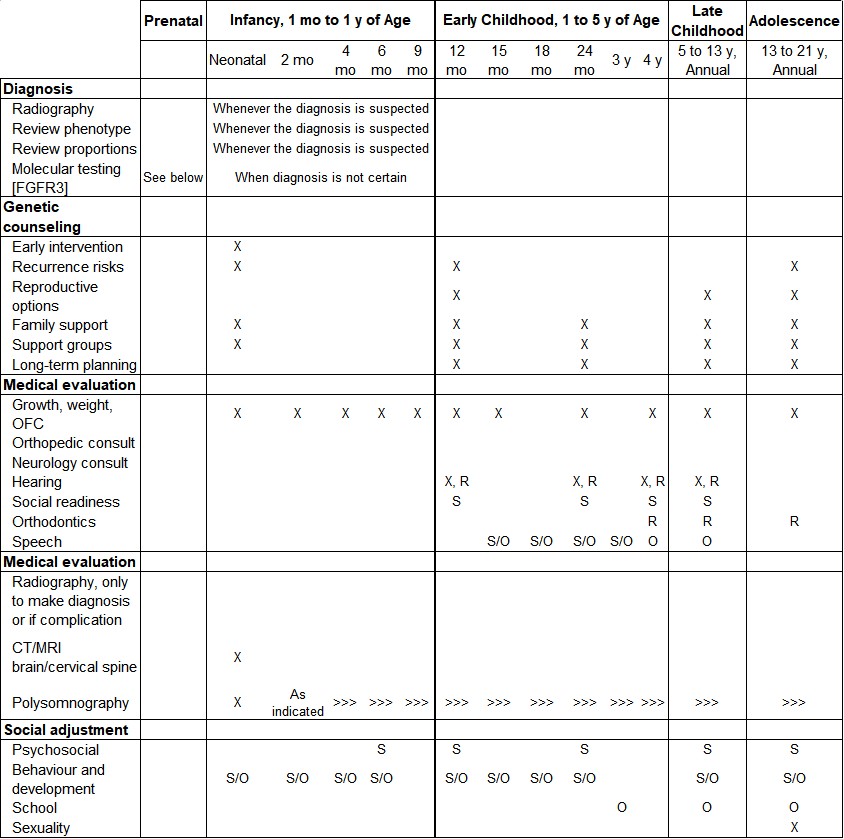Medical exams/tests


| X - To be performed; S - Subjective, by history; O - Objective, by a standard testing method; R - Discuss referral to a specialist; >>> - Continue to monitor. OFC - Occipital-Frontal Circumference. Adapted from: Trotter & Hall, 2005. |
- Molecular/genetic testing should be done in children who are atypical or to differentiate from other similar diseases. It isn't necessary in every case where the achondroplasia diagnosis is suspected [1];
- CT scans (computer tomography scan) and MRIs (magnetic resonance imaging) are imaging techniques used, in this case, to detect Foramen Magnum stenosis, one of the most worrisome complications in achondroplasia. Each has its advantages and disadvantages [1];
- Polysomnographies are also called sleep studies and are used to diagnose and monitor sleep disorders (the most common in achondroplasia is sleep apnea) [1];
- Neural ultrasonography such as transfontanelar ultrasound are imaging techniques used for monitoring ventriculomegaly (one of the causes for the large head) and excessive extra-axial fluid, which are common benign accompaniments of achondroplasia;
- When testing for hearing, the result will be an audiogram, which is a graphical display of the hearing test for each ear. It measures the limits of both the intensity and the frequency range the child can hear. [2]
Sources:
- Trotter, T.L. and J.G. Hall, Health Supervision for Children With Achondroplasia. Pediatrics, 2005. 116(3): p. 771-783.
- Johns Hopkins Medicine. Understanding Your Audiogram. [cited 2017 05/09].


